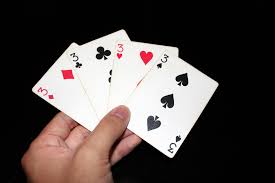Rummy Pick Up Rules, is a versatile card game enjoyed by many for its engaging gameplay and strategic depth. Central to the game are the rules for picking up cards, which significantly influence a player’s strategy and overall success. This article explores the fundamental rules and strategies associated with picking up cards in rummy.
Basic Rules of Rummy
Before diving into the specifics of picking up cards, let’s briefly review the basic structure of rummy:
- Objective: The main goal is to form valid combinations of cards, known as melds. Melds can be sets (three or four cards of the same rank but different suits) or runs (three or more consecutive cards of the same suit).
- Setup: Rummy is typically played with two to six players. Each player is dealt a specific number of cards (usually 10 for two players, 7 for three or more). The remaining cards form the stockpile, and one card is placed face-up to start the discard pile.
Picking Up Cards in Rummy
The rules for picking up cards in rummy are straightforward but crucial to gameplay. Players can pick up cards from either the stockpile or the discard pile during their turn. Here’s a detailed look at each option:
1. Drawing from the Stockpile
- How It Works: On their turn, a player can choose to draw the top card from the stockpile. This is the most common and straightforward option.
- Strategic Considerations: Drawing from the stockpile is often seen as a safe move because it keeps the opponent unaware of the specific cards being added to the player’s hand. This option is ideal when the player is looking for a variety of cards to complete their melds and wants to avoid giving away their strategy.
2. Picking Up from the Discard Pile
- How It Works: Alternatively, a player can pick up the top card from the discard pile. This card has been discarded by an opponent in a previous turn.
- Strategic Considerations: Picking up from the discard pile can be risky but rewarding. It indicates to opponents that the card is likely valuable to the player, potentially revealing part of their strategy. However, it can also be a strategic move if the card directly helps in completing a meld.
Specific Variations and Rules
Different variations of rummy may have unique rules regarding the pick-up process:
Gin Rummy
- Drawing and Discarding: In Gin Rummy, players draw one card from either the stockpile or the discard pile and then discard one card from their hand.
- Knocking: Players can end the round by “knocking” if their unmatched cards total 10 points or fewer.
Indian Rummy
- Initial Card Drawing: Each player is dealt 13 cards, and the game uses two decks. Players draw from the stockpile or discard pile to complete sets and runs.
- Joker Usage: Indian Rummy often includes jokers, which can be used as substitutes for any card to form melds.
Canasta
- Drawing Rules: Players draw two cards from the stockpile or pick up the entire discard pile under specific conditions.
- Melding Rules: Players must meet certain criteria to pick up the discard pile, such as having a matching pair in hand.
Advanced Strategies for Picking Up Cards
To excel at rummy, players need to develop advanced strategies for picking up cards. Here are some tips:
- Track Discards: Keep a mental note of the cards opponents discard. This information can help in predicting their strategies and deciding whether to pick up from the discard pile.
- Baiting Opponents: Discard cards strategically to mislead opponents about your needs. This can make them discard valuable cards that you can then pick up.
- Balancing Risk and Reward: Weigh the benefits of picking up a specific card from the discard pile against the risk of revealing your strategy to opponents.
- Adapting: Be flexible and ready to change your approach based on the evolving state of the game and the cards you draw.
Conclusion
Understanding and mastering the pick-up rules in rummy is essential for success. Whether you draw from the stockpile to keep your strategy hidden or pick up from the discard pile to complete a meld, each choice influences the game’s outcome. By incorporating advanced strategies and adapting to the game’s flow, players can enhance their rummy skills and enjoy this timeless card game to the fullest.




